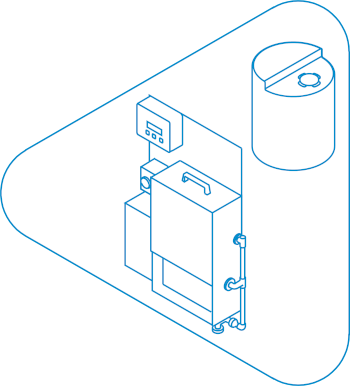Disinfection
Title:
Sodium hypochlorite-based disinfectant
Short description:
Production of mobile devices for making disinfectants based on sodium hypochlorite.
Author:
Alex Engineering and Construction doo
Requested Budget:
250.000 USD
Time frame:
2.5 months

Problem: Besides the direct contact with respiratory droplets of an infected person, the coronavirus can also be transmitted through touching surfaces contaminated with the virus. The rapid spread of the coronavirus Covid-19 pandemic has put disinfectants in extraordinarily high demand, slowing down or even breaking the supply chains. Some countries have even imposed bans on the export of disinfectants, making the local self-sustainable production an important asset in resilience to Covid-19 and other health hazards.
Solution: To produce mobile devices for making disinfectants on the basis of sodium hypochlorite from readily available and affordable raw materials in the very settings in which they are needed, such as health and education facilities, homes for the elderly and green markets. The company, specialized in disinfection of water, has come to the idea to adapt its existing equipment for producing disinfectants for surfaces, spaces, and hands, in various concentrations from 0.05 to 0.02%, which is in line with WHO and European Centre for Disease Prevention and Control recommendations. Only water, electricity and salt are needed for the production of disinfectant solution, making the process independent of suppliers and the devices safe for handling, given that there is no need for storage or overflow of hazardous chemicals. Also, it minimizes the need for single-use packaging. The production capacities of mobile devices could differ form 144 l/ day to 38,400 l / day, depending on the user’s needs.
Additional info: The project is submitted by a company specialized in disinfection. This system is currently in place in ten water supply facilities in Serbia. While the proposed technology is not new, it has only been previously used in waterworks and its application in health could have a significant impact.